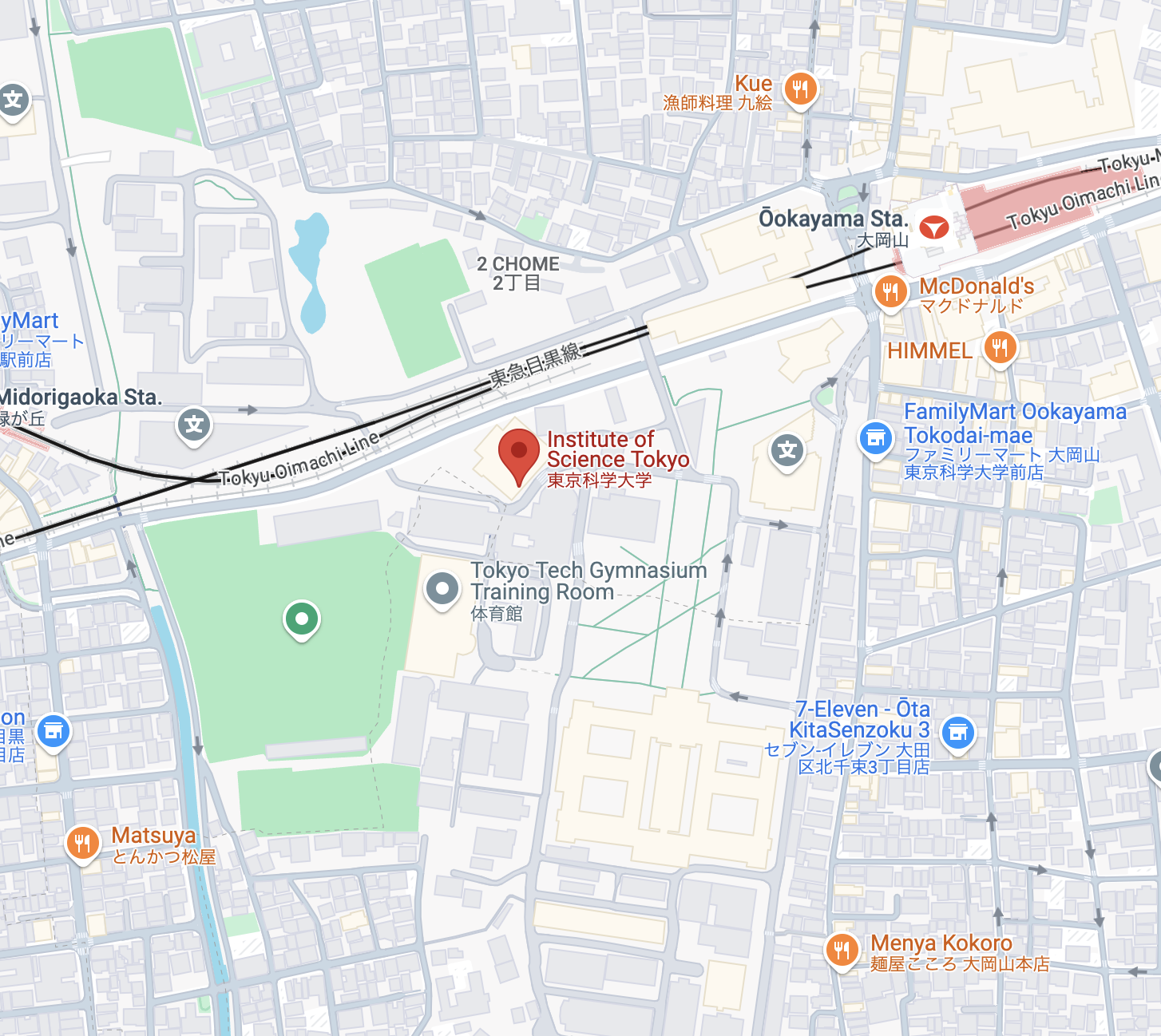
Eighth Conference on
Discrete Optimization and Machine Learning
Summer 2026 x Tokyo, Japan
Coordinates
Dates: July 13th - 15th, 2026
Place: Institute of Science Tokyo (formerly Tokyo Tech - 東京工業大学), Tokyo, Japan
Organizers: Antoine Deza, Kazuhide Nakata, Sebastian Pokutta, Akiyoshi Shioura
Participants
- Pierre Ablin
- Claudia D'Ambrosio
- Roland Andrews
- Alexandre d'Aspremont
- Chenglong Bao
- Amitabh Basu
- David Bremner
- Munmun De Choudhury
- Hong T.M. Chu
- Marco Cuturi
- Santanu Dey
- Anna Deza
- Antoine Deza
- Ana Djurdjevac
- Rosa Figueiredo
- Dan Garber
- Laurent El Ghaoui
- Silvia Di Gregorio
- Akshay Gupte
- Bo Han
- Elad Hazan
- Ayumi Igarashi
- Hiroshi Kera
- Felipe Lara
- Michel de Lara
- Alexandra Lassota
- Jon Lee
- Leo Liberti
- Andrew Lim
- Kaibo Liu
- Bruno Lourenço
- Frédéric Meunier
- Kazuhide Nakata
- Bento Natura
- Frank Nielsen
- Pierre-Louis Poirion
- Sebastian Pokutta
- Ting Kei Pong
- Michaël Poss
- Houduo Qi
- Lorenz Richter
- Akiyoshi Shioura
- Martin Skutella
- Tamon Stephen
- Masashi Sugiyama
- Akiko Takeda
- Andrea Walther
- I-Lin Wang
- Makoto Yamashita
- Haoxiang Yang
- Akiko Yoshise
- Jingyi Zhao
- Yuan Zhou


